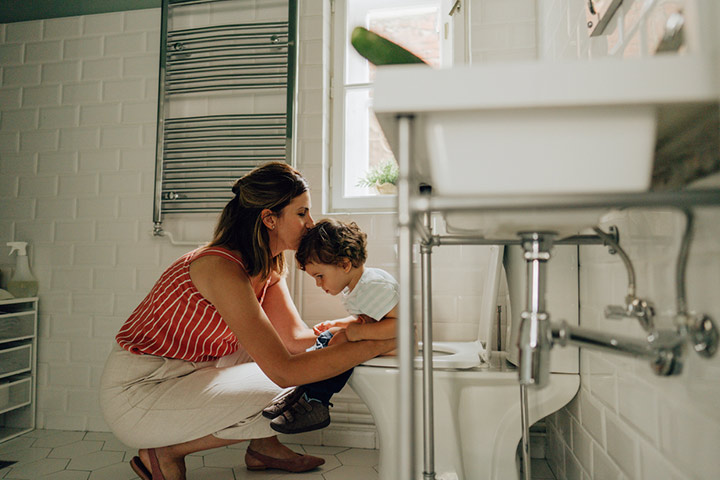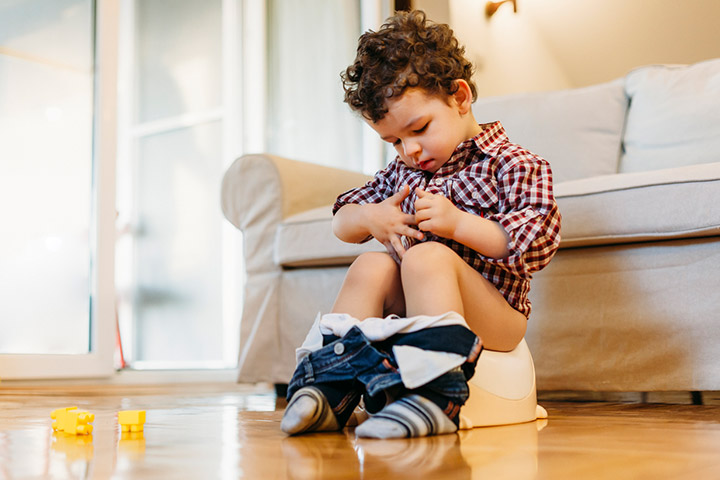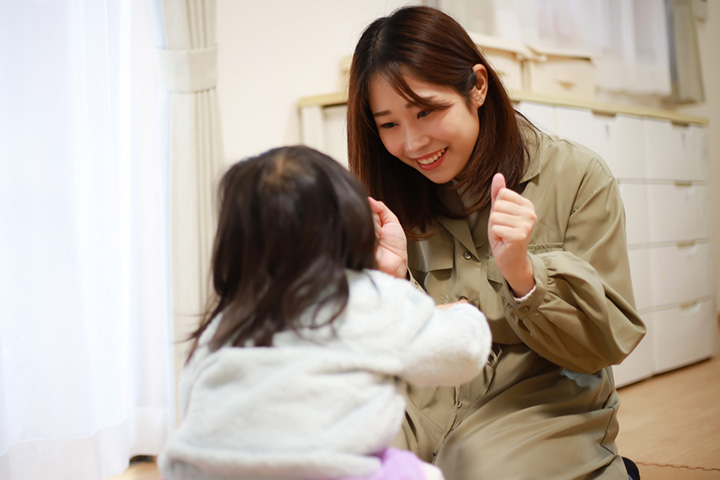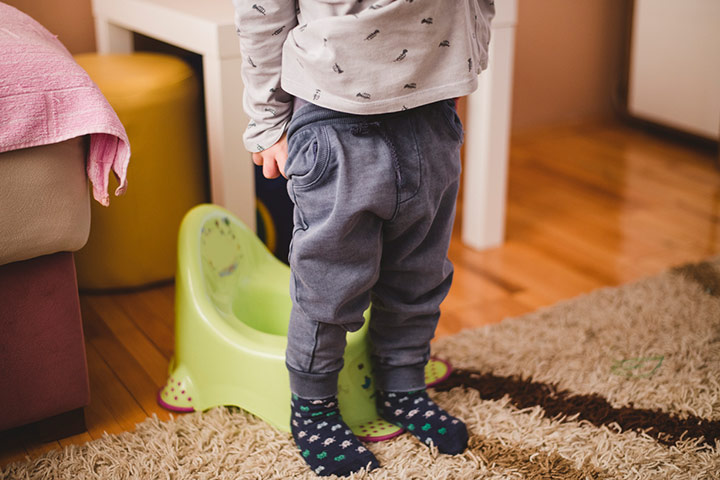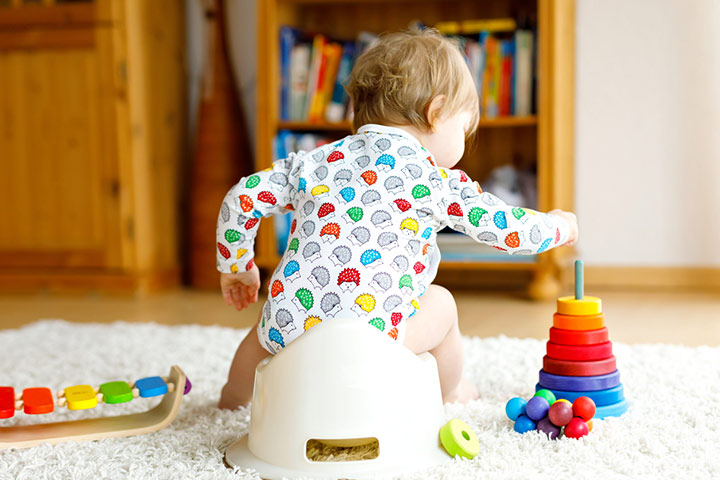
Image: iStock
When we talk about the joys of parenthood, changing diapers is not on the list! But it still is an integral part of your child’s early years. On average, babies change close to eight to ten diapers a day in the first few months of life (1). As much as we hate diaper duties, it indicates that all’s well with your tiny tot. Luckily, your child won’t need diapers forever because soon enough, they’ll be using the loo for themselves! With proper potty training, your child will be able to manage their loo visits just like adults!
Many parents have questions about potty training, and that’s good: with the correct answers and tips, you’ll be better equipped to teach your child how to potty train. So, without further ado, let’s deep dive into a few common potty training questions that are waiting to be answered:
When Are Babies Ready To Be Potty-Trained?
Potty training is a developmental milestone, and much like every other milestone, it depends on the child. While most children exhibit signs of being ready for potty training as early as eighteen months to twenty-four months of age, it is completely normal if your child takes longer. Some children may not be ready to get potty trained until three years of age! (2).
How Do You Know If Your Child Is Ready To Be Potty-Trained?
A few things indicate that your child is ready to be potty trained. We’ve listed them below (3):
- Ask yourself if your child can fully get up, walk towards the potty, and sit comfortably on it.
- Does your child know to pull down their pants (by themselves) and pull it back up again, without your help?
- Can your child go without a soiled diaper for close to two hours?
- Has your child started to communicate with you in case they need to pee or poop?
- Is your child capable of understanding basic instructions from you such as “sit”, “wash”, “flush”, “pee”, or “poop”?
- Is your child excited about the prospect of using the toilet and wearing undies instead of diapers?
If you answered “yes” to most of these questions above, then the chances are that your child is probably ready to begin potty training!
Do Girls Get Potty-Trained Faster Than Boys?
Rumor has it that girls are a lot faster when it comes to potty training, and the entire process of training them is a lot less frustrating than boys. The truth is, the jury is still out on whether or not this is true. Some experts believe that it could be true, but it is attributed to girls being a lot more advanced than boys when it comes to language and physical development. And skills such as language development can come in handy when trying to potty train your child (4).
Should Boys Sit Or Stand When They Pee?
When your son has just started to potty-train, it is best to begin with teaching them to pee in a sitting position. It may confuse them if you teach them to sit when doing the big job but stand while peeing. Also, they may not understand while you teach them how to stand and pee. Begin by teaching them how to pee while sitting so that their urine is directed inside the commode. Gradually, when your son gets a little older, you can teach them how to stand and pee and to do so without spraying the whole bathroom, but by directing the flow into the urinal or commode. Yup, aiming right is important! (5).
How Can You Encourage Kids To Begin Potty Training?
It could be that your child is very comfortable with the idea of peeing or pooping in their diapers. But we know that this has to stop at some point, and the earlier, the better. There are a few ways in which you can encourage your baby to begin potty training. For one, you could get them involved in choosing the potty seat. In most cases, the ones sold are colorful and fun to look at. Then, you can get them to select and wear fun “big boy” or “big girl” underwear, ones that most likely have fun pictures of their favorite cartoon characters (6).
What Are Some Potty Training Tips For Girls And Boys?
Potty training, like the name suggests, requires a little bit of handholding, so your child can make the transition from diaper to potty seat seamlessly. Here’s a bunch of tips that can help them do so better (7):
- Create Specific Words: Come up with words that your child can use to communicate that it’s time to go to the potty seat. For example, if your baby wants to pee, use the word “pee”, so they make the connection and begin using it themselves. When they have to poop, you could say “poo-poo”, so they know that when they say this, you will help them head to the potty seat. Avoid turning potty time into something negative by saying “stinky” or “yuck”, which will discourage them from using the potty when they have to.
- Schedule Specific Timelines: It can help if you make your child sit on the potty seat for a few minutes every two hours, even if they don’t necessarily need to use the chair. Make sure you schedule potty or pee breaks as soon as they wake up, in between naps, after mealtimes, and right before bedtime.
- Prioritize Hygiene: It is of utmost importance to teach your children how to urinate or pass motion hygienically. For girls, make sure they spread their legs wide enough when they have to go and wipe or wash from front to back. Tell them that this way, they won’t bring any dirt or germs toward their lady parts. For boys, teach them to direct their urine into the potty so that it doesn’t get on them. Make sure you teach your kids to wash their hands every time they go.
- Keep The Potty Handy: Instead of keeping the potty seat away from them in another room, you might want to keep it close enough for them to go if they need to. Let it be in one corner of their room for easy access.
If your child hates the idea of potty training and seems to resist your training every time you try, it could be that they aren’t ready yet. When you push your child too much, it will lead to a power struggle that could end up frustrating them. Therefore, it is best to take a break and try again after a few weeks. And always remember that patience is vital. What are your thoughts on this? Do you have any tricks up your sleeve that can help with potty training? Let us know in the comments below!

